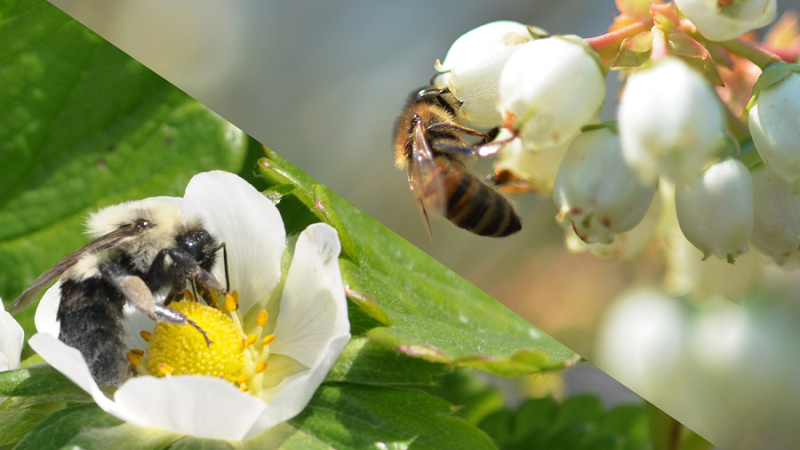Potent Peppers
This list includes a number of varieties currently popular with Florida growers. At present, four to five cultivars probably constitute 80% to 90% of commercial production in Florida.
(See Table For Key to Abbreviation)
- Allegiance – Vigorous, medium to tall plant with good leaf cover. High yielding with extended harvest. Fruits highly uniform, dark green, blocky 4-lobed thick walled fruit. R to Xcv 1-5, PVY, TMV. Harris Moran.
- Aristotle – Dark green anthocyaninless fruits, heavy set, thick walls, large fruit size. Matures red. R to Xcv 1-3 (X3R®), PVY 0, Tobamo P0 (R). Seminis.
- Classic – Thick-walled with smooth, flat shoulders and even lobes. Approaches greenhouse quality in the field. Green to red bell pepper. R to Xcv 1-3. Sakata.
- Crusader – Erect, good cover, extra-large fruit stay firm at mature red stage. R to Xcv 1-3, PVY, S, PepMoV, TMV. Syngenta/Rogers.
- Excursion II – Medium size plant, green to red blocky bell. R to Xcv 1-3, PVY, TMV. Abbott and Cobb.
- HM 2641 – Tall erect vigorous plant with good leaf coverage suited for warm weather production. Glossy dark green extra-large and large sized fruit over an extended production period R to, Xcv 1-4 and TMV. Harris Moran.
- Hunter – Early maturity. Medium size plant produces smooth, four-lobed, blocky dark green glossy fruit. Produces a large percentage of extra large fruit. R to Xcv 1-5, TEV, TMV. Syngenta/Rogers.
- Intruder – Mid-season. Medium tall plant. Smooth, firm fruit. Good disease package with R to Xcv 1-3 TEV, TMV and IR to Pc. Syngenta/Rogers.
- Myakka – Vigorous plant with good cover. Large, high quality, dark green fruits. R to Xcv 1-4,TMV. Enza Zaden.
- Polaris – Uniform blocky green to red fruit. R to Xcv 1-3. Western Seed.
- PS 9922815 – Mainly for Georgia and North Florida. R to Xcv 1-6 and TSWV. Seminis.
- PS 9927141 – Main-season. Large robust plant with a continuous fruit set green-to-red blocky bell pepper with large, dark-green, smooth fruit. R to Xcv 1-5 (X5R®) and Tobamo P0 (R). Seminis.
- PS 9928302 – Large robust plant with large, uniform anthocyaninless dark-green fruits that mature to a firm red. Fruits with good size, shape, uniformity and color. R to Xcv 1-5 (X5R®) and Tobamo P0 (R). Seminis.
- Red Bull – Med-large plants with excellent canopy. Firm, blocky, smooth, and thick-walled, 4-lobed large fruit with excellent shipping qualities. R to Xcv 1-3. Sakata.
- Revolution – Cold tolerance, concentrated early set, firm, uniform, extra large green to red fruits. R to Xcv 1,2,3,5 and IR to CMV and Pc. Harris Moran.
- Tom Cat – Early maturing. Medium plant size and a concentrated set that yields a high percentage of extra large and large size fruit. Blocky, dark green color. R Xcv 1-5, TEV, and ToMV. Syngenta/Rogers.
- Vanguard– Medium plant with good foliage, dark green, blocky, XL fruits, 4-lobed, firm, with thick walls. Early maturity with concentrated harvest. R to PepMoV, ToMV, PepMoV and Xcv 1-5. Harris Moran.
- Other Sweet Pepper
- Aruba – Cubanelle type, early-maturing, erect plant, 3 – 4 lobed, elongated fruit, matures from a pale lime green to a bright red. Syngenta/Rogers.
- Grenada – Cubanelle type, maturing from pale green to red. Very smooth, attractive fruit. R to Xcv 1-3. Sakata.
Key to Abbreviation
| CMV | Cucumber mosaic – Cucumber mosaic virus |
| PepMoV | Pepper mottle – Pepper mottle virus |
| PVY | Potato virus Y – Potato virus Y |
| Pc | Phytophthora root rot – Phytophthora capsici |
| ToMV | Tomato mosaic virus – Tomato mosaic virus |
| TMV | Tobacco mosaic – Tobacco mosaic virus |
| TEV |
Tobacco Etch – Tabacco etch virus |
| TSWV | Tomato spotted wilt – Tomato spotted wilt virus |
| Tobamo P0 (R) | Tobamo virus – Tobamo virus Po |
| S |
Stip -Physiological disorder |
| Xcv 1, 2, 3, 4, 5 | Bacterial spot – Xanthomonas campestris pv. vesicatoria |
| R | Resistant |
| IR | Intermediate Resistance |
| T | Tolerant |
*Author’s Note: While this list includes a number of varieties currently popular with Florida growers, it is by no means a comprehensive list of all varieties that may be adapted to the state.
0
1
5
Potent Peppers









